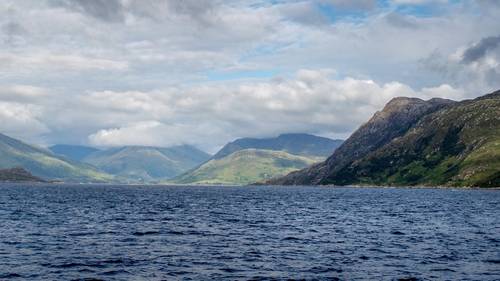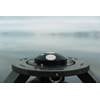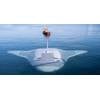Is the Loch Ness Monster Real?
An amazing and wonderful thing about people is our imagination. Indeed, it’s one of the qualities that makes us human.
Every invention that led to our advanced civilization – cars, planes, TV, computers and millions of other things – came from someone’s imagination.
At the same time, the human mind imagines all sorts of things that are not real: gremlins, leprechauns, fairies, trolls, mermaids, zombies and vampires. This also includes imaginary animals, like dragons, unicorns, werewolves, sea serpents and centaurs.
Through stories passed down from generation to generation for hundreds or even thousands of years, these mythological creatures have become legends. In modern times, movies, television and books have spread these stories to millions or even billions of people.
As an anthropology professor, I have spent my life studying human behavior, biology and cultures. And I have studied the evolution of animals and humans. I work in reality, not fantasy.
Yet I understand why these creatures fascinate us; they are intriguing, magical and sometimes frightening. Yet they all have one thing in common. They appeal to the imagination. People wish for them to exist.
The Loch Ness legend
One legend is from northern Scotland in the United Kingdom, where a cold, murky and mysterious freshwater lake called Loch Ness is located. “Loch” is pronounced as “lock.” The word means “lake” in the Scottish language.
Loch Ness is quite large – roughly 23 miles long (37 kilometers), a mile wide (1,600 meters) and very deep (788 feet, or 240 meters, at its deepest). Legends about the lake date back nearly 1,500 years, when an Irish monk, St. Columba, encountered a beast in the river that flows into Loch Ness. Supposedly, he drove the creature away when he made the sign of the Christian cross.
In modern times, more than 1,000 people claim they’ve seen “Nessie,” the name locals gave to the creature decades ago. Descriptions vary. Some say the creature resembles a salamander; others say a whale, or a seal.
Typically, visibility during these sightings was not good. In most of these cases, the witnesses were familiar with the Loch Ness legend.
So far, no one has ever found any physical evidence of an unusual or prehistoric creature living in the loch. Good physical evidence might be capturing the creature, or a clear photograph, or an encounter where a biologist has an opportunity to examine the creature.
 An artist’s concept of the Loch Ness monster. © heywoody / Adobe Stock
An artist’s concept of the Loch Ness monster. © heywoody / Adobe Stock
Nessie is not a plesiosaur
Over the years, some people have conjured up fake evidence – such as footprints, photographs or phony floating objects – to trick others and “prove” the existence of the monster.
The best known of these is a 1934 photograph of what appears to be a creature with a long neck and small head.
The image in the photo looks like a plesiosaur, a long-necked and long-extinct marine dinosaur that resembles descriptions of Nessie.
The phony photograph was really a crude molded figure of a plesiosaur floating on top of a toy submarine.
Yet many people believed – and still believe – the photo is real.
Why Nessie isn’t real
Here are four reasons the Loch Ness monster, like a walking mummy or howling werewolf, is an imaginary creature. First, a large air-breathing animal would have to surface frequently. That means many more people would have seen it.
Second, many people have searched for Nessie, with scuba divers and sonar, all without success. A 2019 study of DNA samples collected from the lake did not suggest the presence of a dinosaur or large reptile.
Third, the Loch Ness body of water has existed for only 10,000 years, since the end of the last glacial period on Earth. But the dinosaurs died out 65 million years ago. So a prehistoric dinosaur could not have ever lived in the lake.
Finally, and perhaps most critical: For the Loch Ness monster to exist and persist through time, a population of these animals must reproduce themselves. Single animals live only for their lifetimes, and not for hundreds of years, as the legend suggests.
Science finds answers
Scientists can usually show that something exists, whether it be a plant or a planet. It’s often very difficult to demonstrate that something – like a monster in a lake – does not exist.
And it’s understandable that many people are intrigued with the Loch Ness monster. Fantastical beliefs and mythmaking seem to be a part of the way human beings like to think.
But by using logic, experimentation and research, scientists can explore the mysteries of the world and find answers.
And there’s more than enough scientific evidence to show that the Loch Ness monster lives only as a creature of our imagination.
The author
Michael A. Little, Distinguished Professor Emeritus of Anthropology, Binghamton University, State University of New York
(Source: The Conversation)

















 February 2024
February 2024



